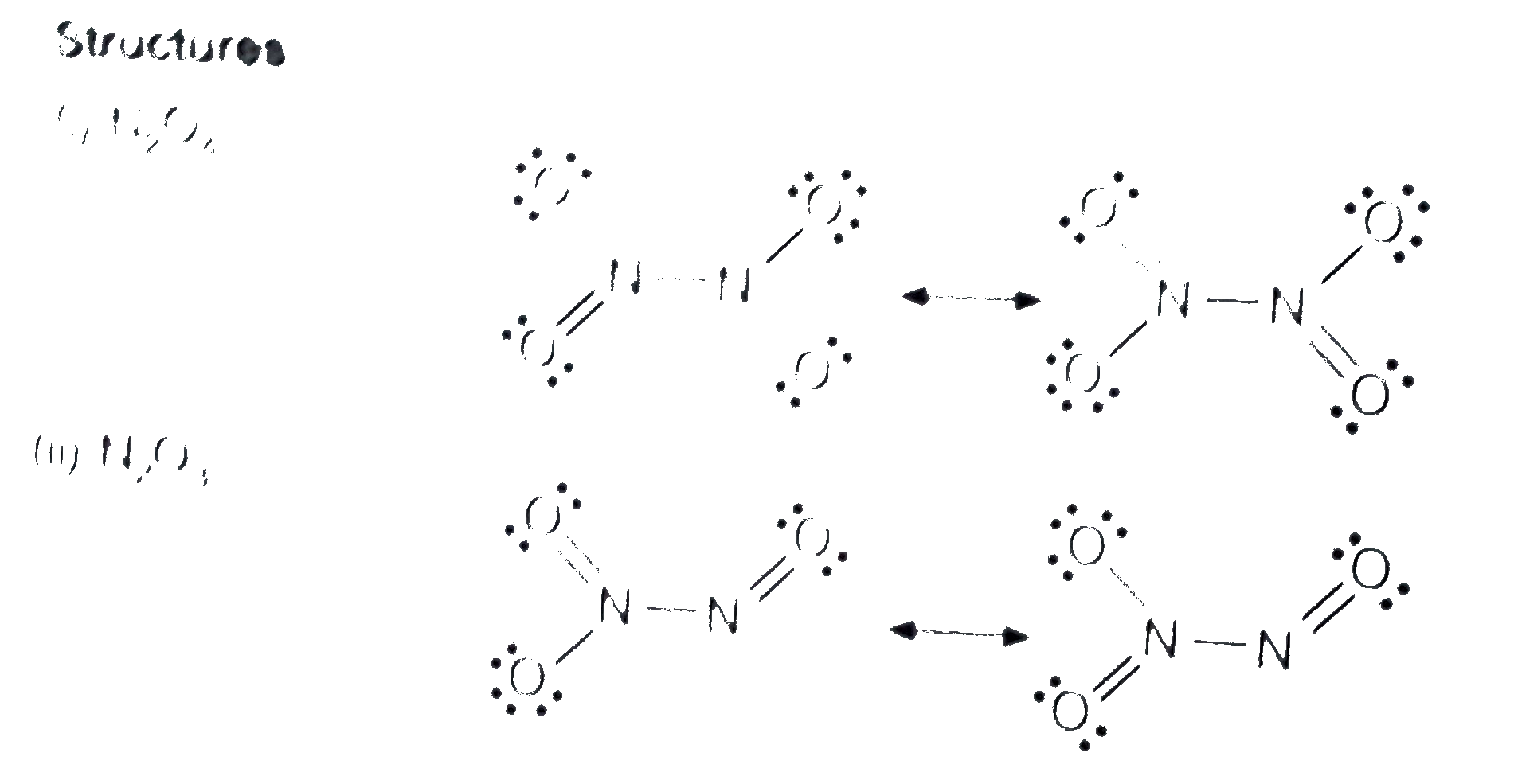On heating lead (II) nitrate gives a brown gas " A". The gas " A" on cooling changes to colourless solid "B" . Solid B on heating with NO changes to a blue solid 'C . Identify ' A', 'B' and' C and also write reactions involved and draw the structures of 'B' and 'C' .
Pb(NO3)2 on heating produces a brown coloured gas which may be NO2. Since , on reaction with N2O4 and on heating it produces N2O3 and N2O4 respectively.
Structures
(i) N2O4 , (ii) N2O3

Topper's Solved these Questions
Similar Questions
(a) When concentrated sulphuric acid was added to an unknown salt present in a test tube a brown gas (A) was evolved. This gas intensified when copper turnings were added to this test tube.On cooling the gas (A) changed into a colourless solid (B). Identify (A) and (B). Writen chemical reactions involved.
(b) Drawn structure of XeOF4.
View Solution(a) When concentrated sulphuric acid was added to an unknown salt present in a test tube a brown gas (A) was evolved . This gas intensified when copper turnings were added to this test tube . On cooling, the gas (A) changed into a colourless solid (B) .
(i) Identify (A) and (B).
(ii) Write the structures of (A) and (B).
(iii) Why does gas (A) change to solid on cooling ?
(b) Arrange the following in the decreasing order of their reducing character :
HF , HCl , HBr , HI
(c) Complete the following reaction :
XeF4+SbF5→
View Solution
Knowledge Check
By cannizaro reaction A change to B and C as gives Identify 'A'
 A
A B
B C
C D
D
Which of the following changes directly from solid to gas on heating?
Aammonium chlorideBsodium chlorideCpotassium chlorideDcalcium chlorideWhich of the following changes directly from solid to gas on heating?
AAmmonium chlorideBSodium chlorideCPotassium chlorideDCalcium chloride
When conc. H2SO4 was added to an unknown salt present in a test which was heated, a brown gas (A) was evolved. The gas intenstified when copper turning were also added into the test tube. On cooling, the gas (A) changed into a colourless liquid (B).
(a) Identify the gases A and B
(b) Write equations for the reactions involved.
View SolutionAn orange solid a on heating gave a green residue B, a colourless gas c and water vapour. The dry gas c on passing over heated Mg gave a white solid D. D on reaction with water gave a gas E which formed dense white fumes with HCl. Identify A to E and give the reaction involved.
View SolutionLead nitrate on heating gives A, A on cooling give B, NO with B give C(blue solid). Find oxidation no of N in compound C
View SolutionThe orange solid on heating gives a colourless gas and a greensolid which can be reduced to metal by aluminium powder. The orange and the green solids are respectively
View SolutionThe orange solid on heating gives a colourless gas and a greensolid which can be reduced to metal by aluminium powder. The orange and the green solids are respectively
View Solution
